StephenZozaya
Not so new Member
I recently joined Gus up north to the Tully area to assist him with his masters project, which involves tracking the endangered rainforest frog Litoria rheocola. His site was near Mena Creek in a patch of secondary rainforest. I first spent time at the site in August 2008 while assisting another friend who was doing similar work. Here are a few photos from that trip.
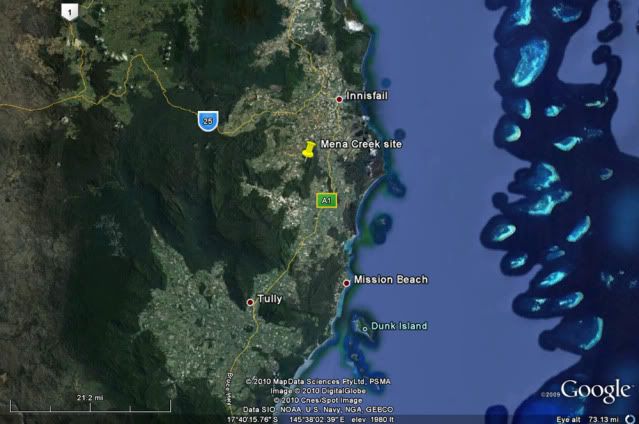
Red-bellied black snake Pseudechis porphyriacus

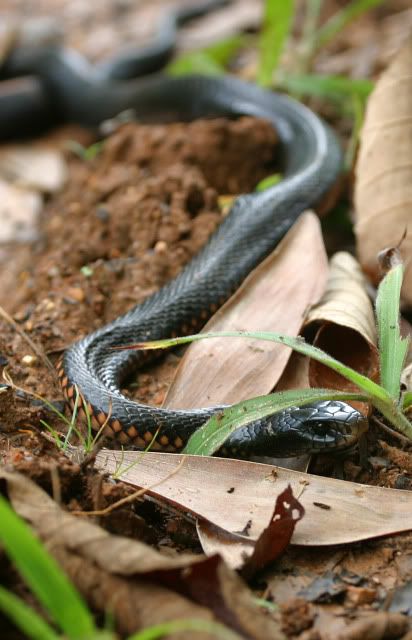
Papuan Frogmouh Podargus papuensis

Australian water dragon Physignathus lesueurii
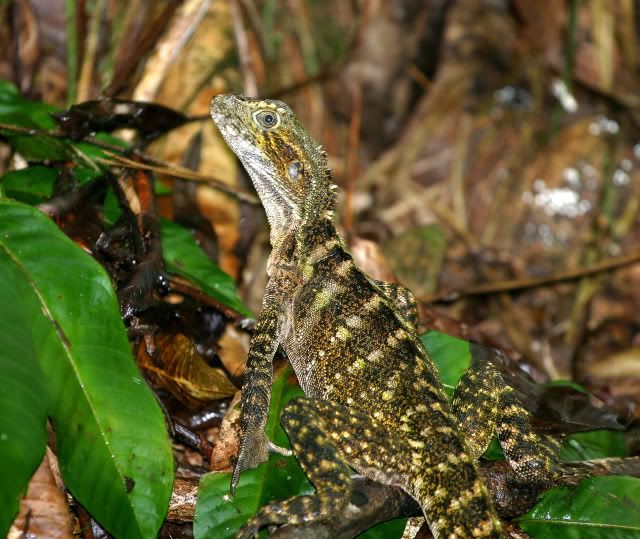
A rather dull looking white-lipped treefrog Litoria infrafrenata
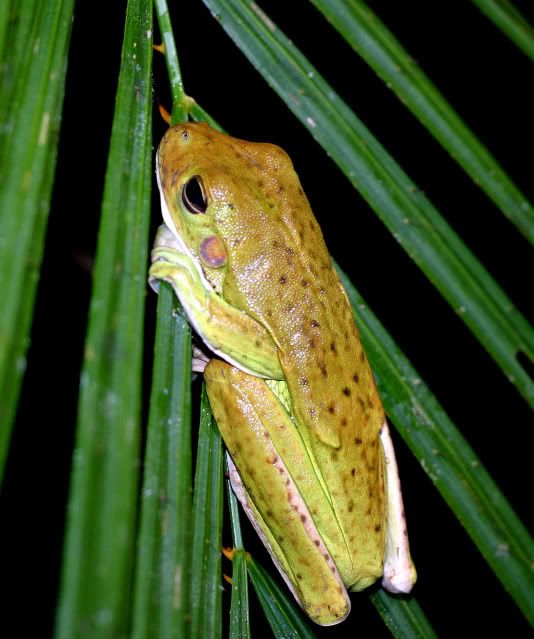
Now for the recent stuff!
The original plan was to head up on the 9th of January and stay until the 22nd. However, we were inconvenienced the first night due to very heavy rains. Access to the site had become impossible as the creek we had to cross had become quite the torrent. So since no actual work could be done we decided to head to Tully Gorge to look for scrub pythons. We were successful.
Scub Python Morelia kinghorni

Another individual found a bit north of Tully.

And another found near Mena Creek

While driving back from Tully we also came across this jungle carpet python Morelia spilota cheynei

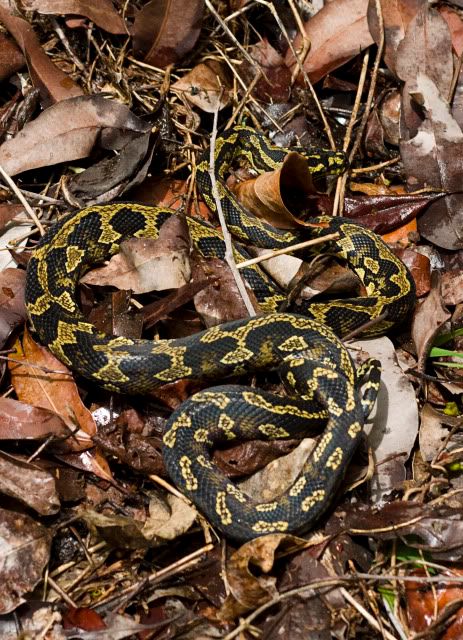
And another individual found the following week near Murray Falls.
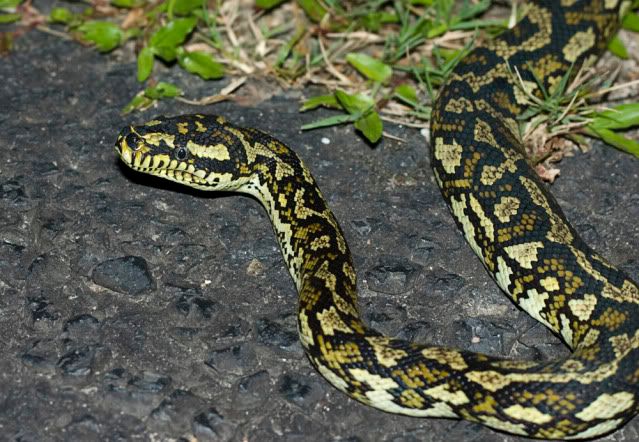
Because of the rain there were literally thousands of frogs (alive and dead) out on the roads near Tully. The majority of them were Litoria gracilenta and L. fallax but there were also a few L. nasuta and L. infrafrenata amongst them. We stopped at the campgrounds near Tully Gorge to photograph some frogs.
Northern orange-eyed treefrog Litoria xanthomera

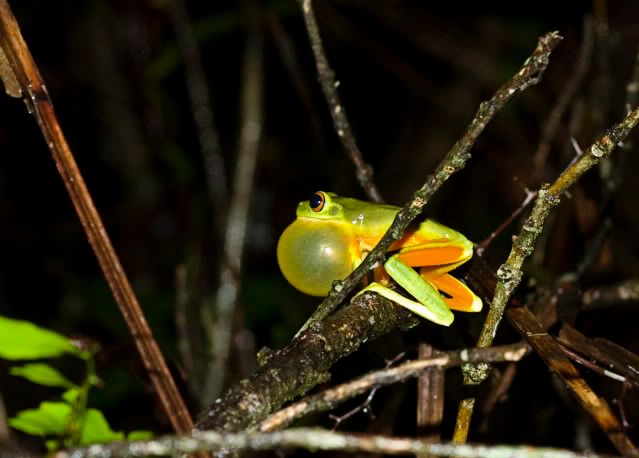
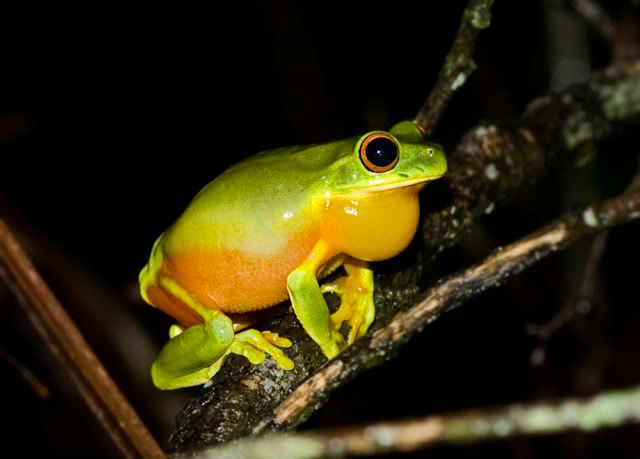
Graceful treefrog Litoria gracilenta


The following day we decided to make a short trip to Mission Beach. We planned on a hike but that plan was scrapped when a local gave Gus and I an injured gravid olive sea snake Aipysurus laevis. You can see an earlier post of Gus' regarding this snake from a few weeks back.

We decided that to drive back to Townsville and drop the snake off at Reef HQ for possible rehabilitation. Before doing so we decided to spend a few minutes on the beach looking for skinks.
Cryptoblepharus litoralis were abundant on beach-side rocks.
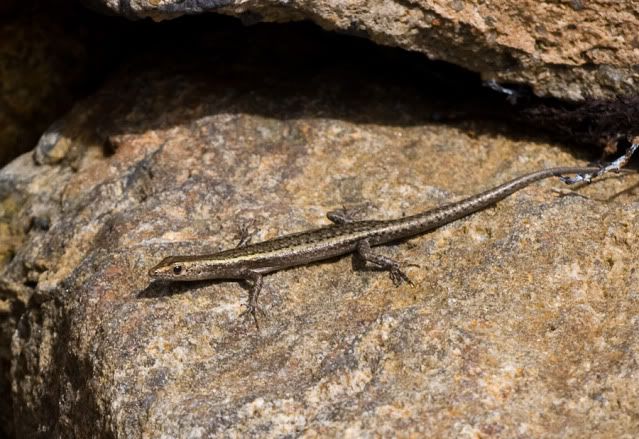
The next two days were spent in Townsville waiting for the rain up north to clear up. I joined my friend Kris to the Townsville Town Common for a night of herping. We were there mainly to find keelback snakes for Kris' research, but we also saw a burton's legless lizard (Lialis burtonis) as well as a few frogs and this water python Liasis mackloti.

A very small keelback snake Tropidonophis mairii.

Green-striped frog Cyclorana alboguttata.

The time came to head back north to the Tully area. Before leaving Townsville we had to stop and release this beautiful eastern carpet python (Morelia spilota mcdowelli) which Gus had caught out on a snake call.
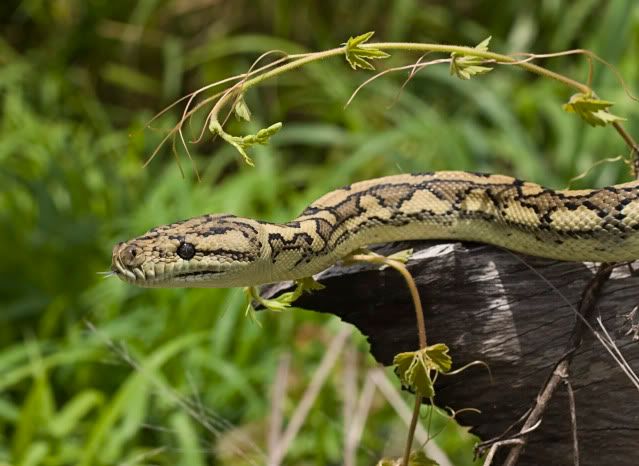
We were greeted by sunshine as we arrived north. The week turned out very well as it only rained a little, mainly in the early morning. This is pretty uncharacteristic of the area. It made the working conditions far more comfortable than when I spent a week at this site in 2008.
Just a few days into the trip, while walking along one of the transects at night, we came across a very interesting turtle. All we had ever seen at the site before this were saw-shelled turtles (Elseya lasisternum), which this animal definitely wasn't. We keyed the turtle out and were surprised to discover that it was a northern snapping turtle (Elseya dentata). Neither Gus nor myself had any idea that this species occurred in the Tully-Innisfail area. We didn't see any other individuals of this species, just more of the usual saw-shells.

There were heaps of frogs along the transect. Easily the most common frog along the creeks is the mistfrog Litoria rheocola. L. rheocola is endemic to the Australian Wet Tropics and has disappeared from nearly all mid to high altitude areas due to the spread of chytrid fungus. Gus' research deals primarily with this species.

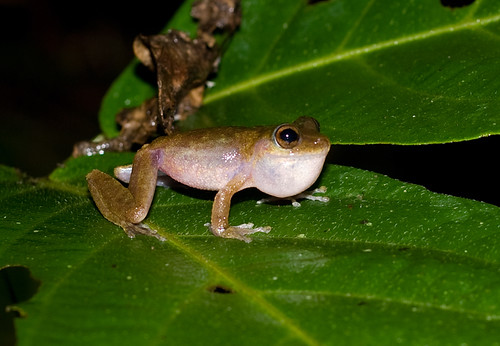
This is one of the few females that we found and the only one that we tagged for tracking. She was full of eggs.

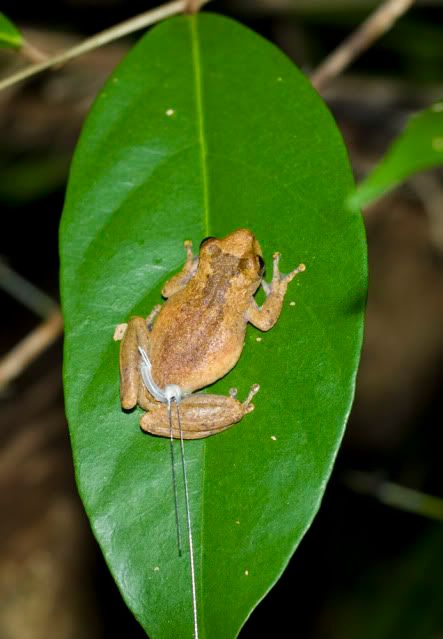
Australian lace-lid frogs (Litoria (Nyctimystes) dayi) are another endemic frog which has been hit hard by chytrid fungus. Luckily they were fairly common at the site.



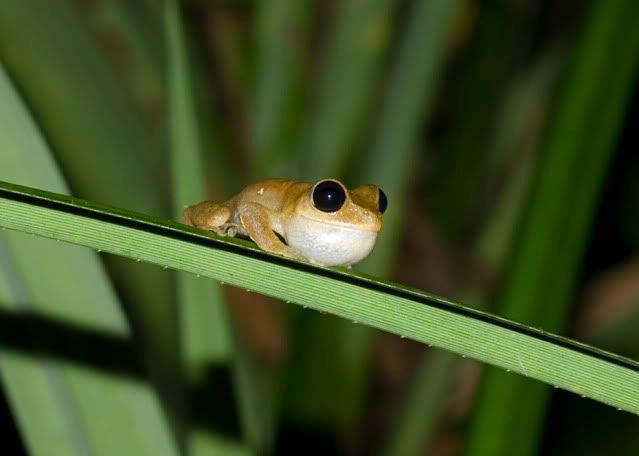
Rana daemeli are Australia's one and only representative of the family Ranidae.

The white-lipped treefrog (Litoria infrafrenata) is a large and beautiful frog endemic to the Wet Tropics bioregion.
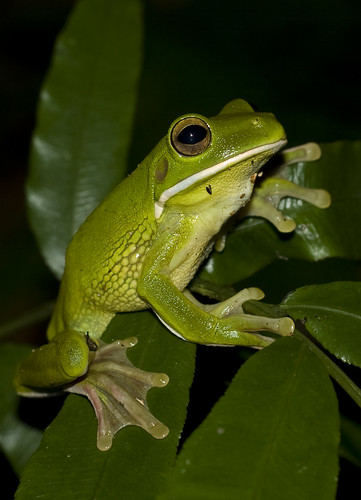
Baby water dragons (Physignathus lesueurii) were commonly encountered sleeping on vegetation and rocks overhanging the water.
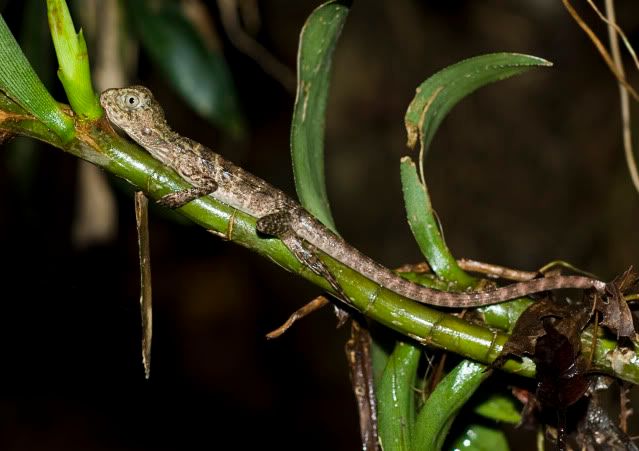

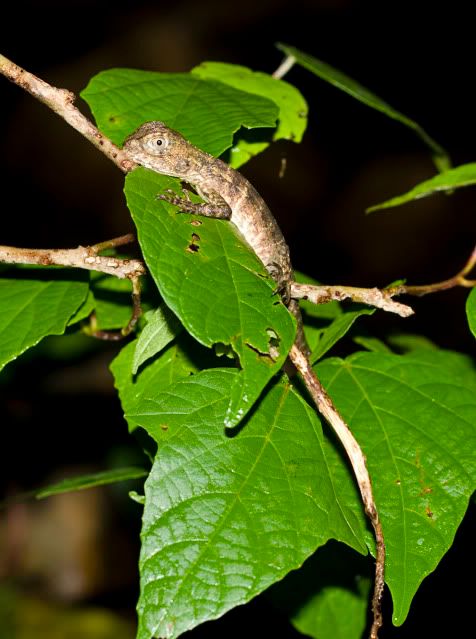
Another another animal found sleeping. Azure kingfisher Alcedo azurea.

On the way back to Townsville we decided to stop in Cardwell in order to look for death adders in the area. Unfortunately, we did not find any adders. We did, however, come across a single spotted python Antaresia maculosa.
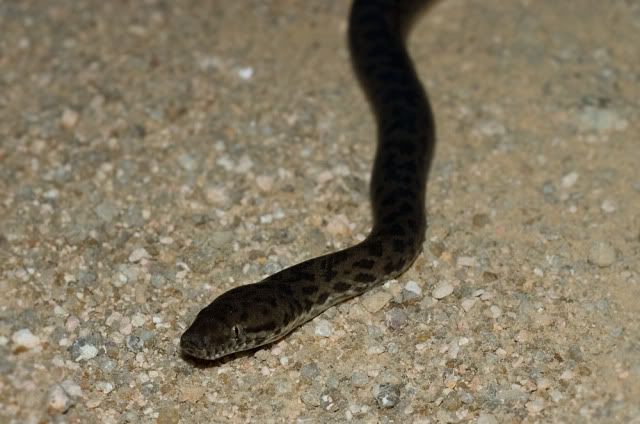
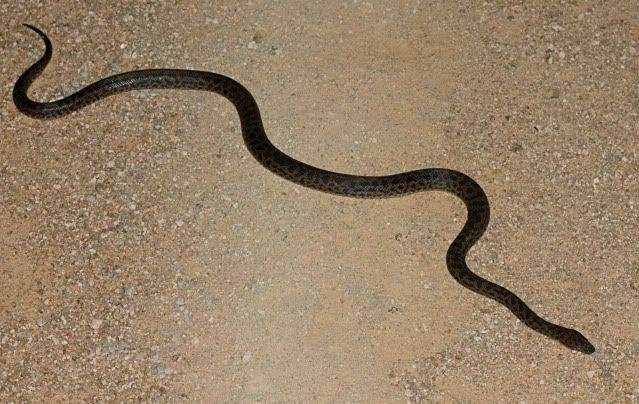
We stopped again near Jourama Falls. Once again no adders. This time we saw a few zigzag geckos (Oedura rhombifer) on some large boulders near the falls.


Cheers
Stephen

Red-bellied black snake Pseudechis porphyriacus


Papuan Frogmouh Podargus papuensis

Australian water dragon Physignathus lesueurii

A rather dull looking white-lipped treefrog Litoria infrafrenata

Now for the recent stuff!
The original plan was to head up on the 9th of January and stay until the 22nd. However, we were inconvenienced the first night due to very heavy rains. Access to the site had become impossible as the creek we had to cross had become quite the torrent. So since no actual work could be done we decided to head to Tully Gorge to look for scrub pythons. We were successful.
Scub Python Morelia kinghorni

Another individual found a bit north of Tully.

And another found near Mena Creek

While driving back from Tully we also came across this jungle carpet python Morelia spilota cheynei


And another individual found the following week near Murray Falls.

Because of the rain there were literally thousands of frogs (alive and dead) out on the roads near Tully. The majority of them were Litoria gracilenta and L. fallax but there were also a few L. nasuta and L. infrafrenata amongst them. We stopped at the campgrounds near Tully Gorge to photograph some frogs.
Northern orange-eyed treefrog Litoria xanthomera



Graceful treefrog Litoria gracilenta


The following day we decided to make a short trip to Mission Beach. We planned on a hike but that plan was scrapped when a local gave Gus and I an injured gravid olive sea snake Aipysurus laevis. You can see an earlier post of Gus' regarding this snake from a few weeks back.

We decided that to drive back to Townsville and drop the snake off at Reef HQ for possible rehabilitation. Before doing so we decided to spend a few minutes on the beach looking for skinks.
Cryptoblepharus litoralis were abundant on beach-side rocks.

The next two days were spent in Townsville waiting for the rain up north to clear up. I joined my friend Kris to the Townsville Town Common for a night of herping. We were there mainly to find keelback snakes for Kris' research, but we also saw a burton's legless lizard (Lialis burtonis) as well as a few frogs and this water python Liasis mackloti.

A very small keelback snake Tropidonophis mairii.

Green-striped frog Cyclorana alboguttata.

The time came to head back north to the Tully area. Before leaving Townsville we had to stop and release this beautiful eastern carpet python (Morelia spilota mcdowelli) which Gus had caught out on a snake call.

We were greeted by sunshine as we arrived north. The week turned out very well as it only rained a little, mainly in the early morning. This is pretty uncharacteristic of the area. It made the working conditions far more comfortable than when I spent a week at this site in 2008.
Just a few days into the trip, while walking along one of the transects at night, we came across a very interesting turtle. All we had ever seen at the site before this were saw-shelled turtles (Elseya lasisternum), which this animal definitely wasn't. We keyed the turtle out and were surprised to discover that it was a northern snapping turtle (Elseya dentata). Neither Gus nor myself had any idea that this species occurred in the Tully-Innisfail area. We didn't see any other individuals of this species, just more of the usual saw-shells.

There were heaps of frogs along the transect. Easily the most common frog along the creeks is the mistfrog Litoria rheocola. L. rheocola is endemic to the Australian Wet Tropics and has disappeared from nearly all mid to high altitude areas due to the spread of chytrid fungus. Gus' research deals primarily with this species.


This is one of the few females that we found and the only one that we tagged for tracking. She was full of eggs.


Australian lace-lid frogs (Litoria (Nyctimystes) dayi) are another endemic frog which has been hit hard by chytrid fungus. Luckily they were fairly common at the site.




Rana daemeli are Australia's one and only representative of the family Ranidae.

The white-lipped treefrog (Litoria infrafrenata) is a large and beautiful frog endemic to the Wet Tropics bioregion.

Baby water dragons (Physignathus lesueurii) were commonly encountered sleeping on vegetation and rocks overhanging the water.



Another another animal found sleeping. Azure kingfisher Alcedo azurea.

On the way back to Townsville we decided to stop in Cardwell in order to look for death adders in the area. Unfortunately, we did not find any adders. We did, however, come across a single spotted python Antaresia maculosa.


We stopped again near Jourama Falls. Once again no adders. This time we saw a few zigzag geckos (Oedura rhombifer) on some large boulders near the falls.


Cheers
Stephen



